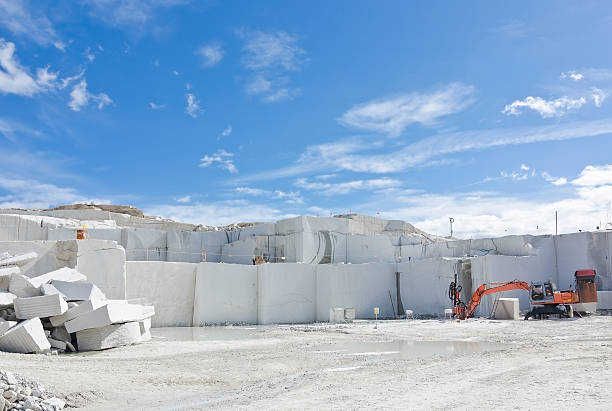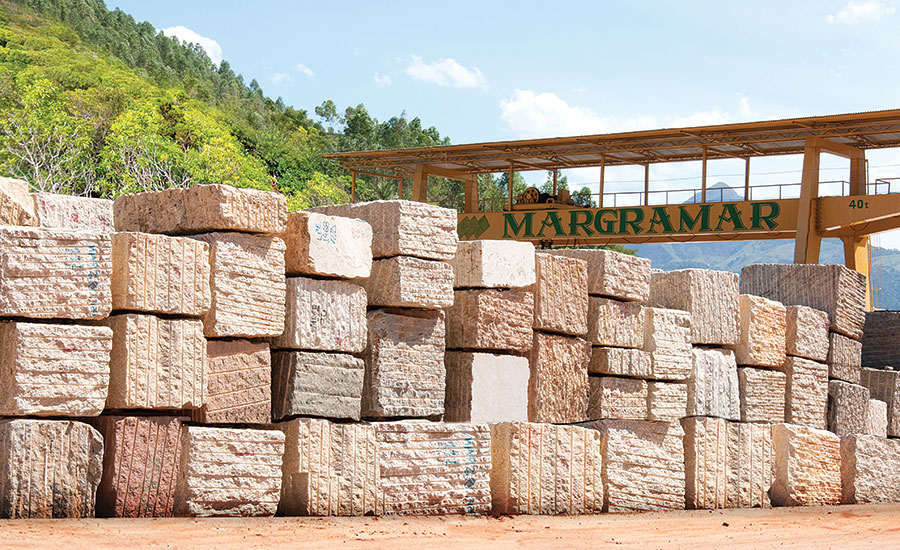Travelling Via Granite Quarries in South Africa: A Visual Odyssey
Travelling Via Granite Quarries in South Africa: A Visual Odyssey
Blog Article
Unearthing the Rich History and Lasting Practices of Granite Quarrying
As we stand on the precipice of revealing the intricate tapestry of granite quarrying, a journey with time reveals not just the physical act of extracting stone yet also the cultural and historical relevance woven right into the very material of this technique. From the old beginnings that laid the structure for modern quarrying techniques to the lasting practices that are forming the future of this market, each chisel mark on granite surface areas informs a tale waiting to be uncovered (granite quarries in south africa). The heritage of granite quarrying stretches far past plain removal; it is a testimony to human resourcefulness, strength, and the long-lasting appeal of this impressive stone
Old Origins of Granite Quarrying
Going back to ancient civilizations, the practice of quarrying granite has been an essential part of human history and building improvement. The earliest evidence of granite quarrying go back to ancient Egypt, where massive pyramids and detailed sculptures were crafted from this durable rock. The Egyptians made use of primitive devices to remove granite blocks from quarries, showcasing the relevance of this material in their monumental buildings.
Progressing in background, the Greeks additionally made considerable contributions to the quarrying of granite. The Greeks made use of granite in numerous architectural marvels, such as holy places and sculptures, demonstrating their ability in shaping and carving this sturdy rock. The Romans further refined the strategies of quarrying granite, utilizing innovative tools like blades and hammers to essence and shape granite for their famous structures.
Via the centuries, the method of quarrying granite has actually advanced, with modern-day technologies enhancing performance while maintaining the ageless charm of this all-natural stone - granite quarries in south africa. From ancient worlds to modern building contractors, the heritage of granite quarrying proceeds to form our world
Advancement of Quarrying Techniques
The evolution of quarrying techniques has been noted by a constant development towards higher effectiveness and precision in extracting granite. From the primary techniques employed by our ancestors to the advanced technologies utilized in modern quarrying operations, the industry has undergone significant innovations. Early quarrying techniques entailed manual labor with standard devices such as knives, hammers, and wedges to draw out granite blocks from the earth. As people advanced, techniques like fire-setting and primitive dynamites were introduced to facilitate the extraction process.
In even more current times, the introduction of machinery reinvented the quarrying market, allowing faster removal prices and enhanced productivity. Technologies such as ruby wire saws, high-pressure water jets, and pneumatic drills have ended up being typical in modern-day quarries, enabling for accurate cutting and lowered waste. Moreover, innovations in computer-controlled devices and 3D modeling have actually enhanced quarrying procedures, leading to minimal environmental effect and enhanced sustainability methods. As the demand for granite remains to climb, the development of quarrying strategies stays essential to conference industry requires effectively and sustainably.
Cultural Relevance of Granite
Granite holds a profound cultural relevance across various human beings because of its enduring existence in building masterpieces and respected monuments. From the majestic pyramids of Egypt to the intricate carvings of the Angkor Wat holy place in Cambodia, granite has actually been a material of option for expressing majesty and durability in social heritage. In ancient Rome, granite columns embellished holy places and public structures, signifying stamina and durability. The social importance of granite prolongs beyond its physical characteristics; it personifies resilience, stability, and eternity, making it a symbol of sustaining traditions and customs.

Lasting Practices in Quarrying
In the middle of the abundant history of granite quarrying and its social value exists an expanding emphasis on lasting practices within the market. As environmental recognition and problems concerning resource depletion have enhanced worldwide, the quarrying sector has increasingly accepted lasting approaches to reduce its effect on the environment and surrounding communities.

Additionally, improvement and rehab of quarry websites post-extraction are important to sustainable methods. By recovering quarried areas to a natural or useful state, such as producing wildlife environments or recreational rooms, quarriers can offset the environmental footprint of their operations and contribute favorably to the regional community.
Legacy of Granite Quarrying
With a historical background soaked in craftsmanship and commercial progress, what enduring influence has granite quarrying left on the landscape of modern-day society? The tradition of granite quarrying goes beyond simple extraction methods; it has actually shaped architectural wonders, metropolitan landscapes, and social heritage worldwide. The resilient nature of granite has made it a recommended selection for monuments, buildings, and framework, standing as a testimony to the skill and artistry of quarry workers throughout generations.
Additionally, the economic footprint of granite quarrying can not be forgotten. The market proceeds to provide job opportunity and drive neighborhood economies in areas where granite removal prevails. It has actually likewise stimulated technical innovations in quarrying strategies and tools, bring about more reliable and sustainable techniques.
In terms of sustainability, the heritage of granite quarrying includes initiatives to reduce environmental effects through recovery jobs and liable source management. By stabilizing financial rate of Check Out Your URL interests with environmental stewardship, the market makes every effort to guarantee that future generations can this article proceed to benefit from this long-lasting natural source.
Final Thought

Report this page